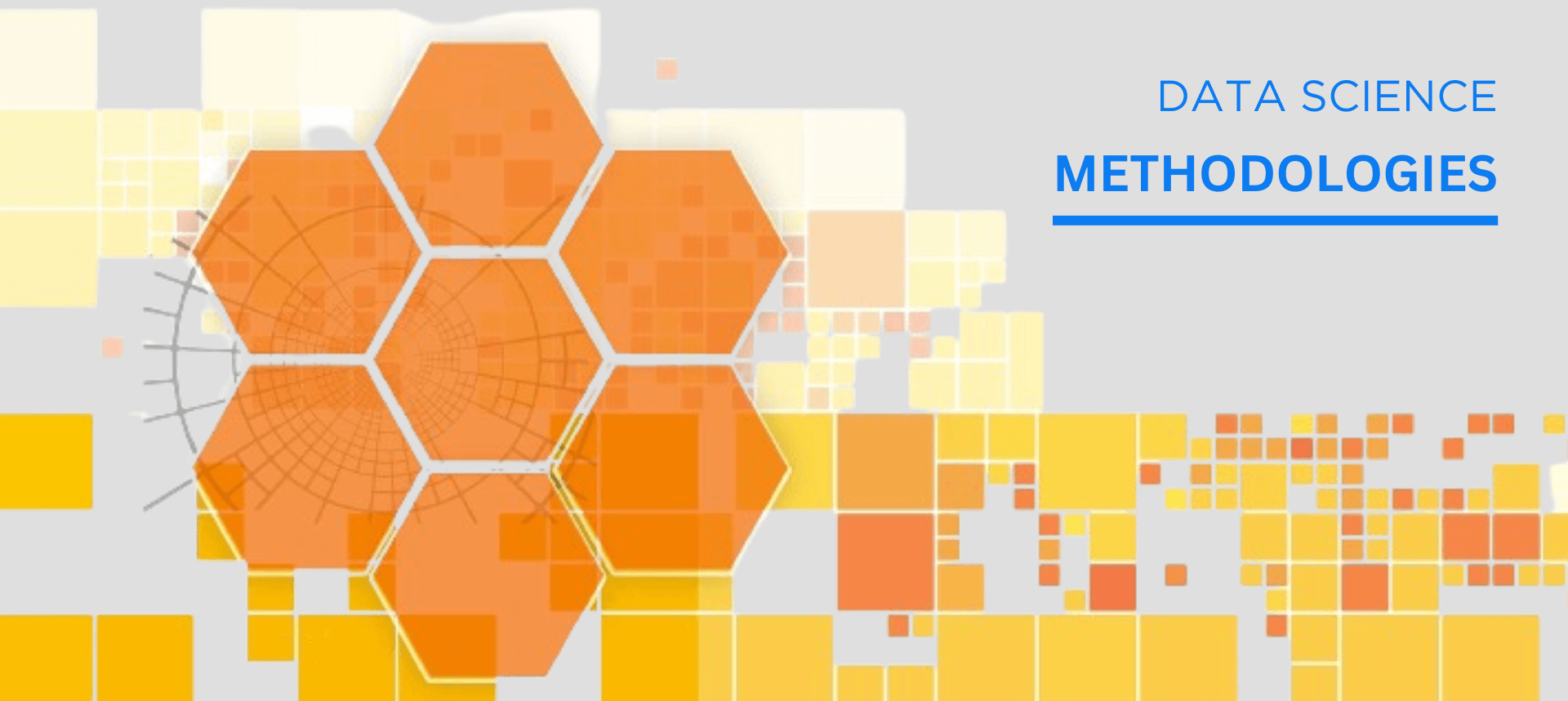- Introduction
- The Role of Big Data in Decision Making
- Essentials of Business Intelligence
- Big Data Technologies and Tools
- Data Governance and Quality Assurance
- Strategies for Effective Data Integration
- Data Visualization for Decision Support
- Challenges in Data-Backed Decision Making
- The Future Trends
- Building a Data-Driven Culture in Organizations
- Ensuring Data Security and Compliance
- Measuring the Impact: Key Performance Indicators for Data-Backed Decision Making
- Conclusion
Introduction
In the dynamic landscape of modern business, informed decision-making stands as the linchpin for success, and at the heart of this strategic evolution lies the symbiotic relationship between “Big Data and Business Intelligence.” This blog post serves as a comprehensive guide to unraveling the intricacies of data-backed decision-making, delving into the essential interplay between the expansive realm of big data and the precision of business intelligence.
As organizations navigate the vast sea of information, understanding how to harness the potential of big data becomes paramount. Business Intelligence, equipped with sophisticated tools and methodologies, emerges as the compass, transforming raw data into actionable insights. Join us on a journey through the essentials of this powerful alliance, exploring the technologies, strategies, and real-world applications that shape a landscape where decisions are not just made but are strategically driven by the fusion of big data and business intelligence. Welcome to the era where data-backed decision-making is not just a necessity; it is the cornerstone of business excellence.
The Role of Big Data in Decision Making
Big Data plays a pivotal role in decision-making by offering a voluminous and diverse set of information for analysis. Organizations leverage big data to identify patterns, trends, and correlations, enabling data-driven insights. It allows decision-makers to move beyond intuition, relying on empirical evidence for strategic choices. Big Data’s ability to process and analyze vast datasets in real-time enhances the speed and accuracy of decision-making processes, providing a competitive edge. From predicting market trends to optimizing operations, the integration of big data in decision-making ensures that choices are not just informed but grounded in the depth and breadth of actionable intelligence.
Essentials of Business Intelligence
Business Intelligence (BI) encompasses the essential tools and processes that convert raw data into meaningful insights, empowering organizations to make informed decisions. The core essentials of BI include data warehousing, where information is centralized for easy access, and analytics tools that transform data into comprehensible visualizations. Reporting mechanisms allow stakeholders to monitor key performance indicators, while dashboards provide real-time snapshots of organizational performance. BI thrives on data integration, ensuring that disparate sources contribute to a unified and accurate representation of information. As a strategic component, BI enables users at all levels to access relevant data, fostering a data-driven culture within the organization. The essentials of business intelligence form a cohesive framework that amplifies the value of data, facilitating agile and well-informed decision-making processes.
Big Data Technologies and Tools
Hadoop
Hadoop is a foundational open-source framework for distributed storage and processing of large datasets. It utilizes the Hadoop Distributed File System (HDFS) for storage and the MapReduce programming model for parallel processing.
Spark
Apache Spark is a fast and general-purpose cluster computing system that provides in-memory processing capabilities. It simplifies complex data processing tasks with its versatile APIs and supports various programming languages.
Apache Flink
Flink is a stream processing framework for big data analytics. It enables real-time processing of data streams and supports event time processing, making it suitable for applications requiring low-latency data processing.
Apache Kafka
Kafka is a distributed event streaming platform that facilitates the ingestion and processing of real-time data streams. It ensures high-throughput, fault tolerance, and horizontal scalability, making it a robust choice for building data pipelines.
NoSQL Databases (e.g., MongoDB, Cassandra)
NoSQL databases are designed to handle unstructured or semi-structured data. MongoDB is a document-oriented database, while Cassandra is a distributed NoSQL database suitable for handling large amounts of data across multiple nodes.
Apache Storm
Storm is a real-time stream processing system that enables the processing of data in motion. It is particularly useful for applications requiring low-latency and fault-tolerant stream processing.
These tools collectively form a robust ecosystem for managing, processing, and analyzing big data, providing organizations with the capability to extract meaningful insights from vast and diverse datasets.
Data Governance and Quality Assurance
Data governance involves the establishment of policies, processes, and standards for managing and ensuring the quality, integrity, and security of organizational data. It encompasses defining roles and responsibilities, establishing data standards, and ensuring compliance with regulations. Quality assurance in the context of big data involves systematic processes to verify and enhance data accuracy, completeness, and reliability. Implementing robust data governance and quality assurance practices is crucial for building trust in the data, supporting informed decision-making, and mitigating risks associated with poor data quality.
Strategies for Effective Data Integration
Effective data integration is pivotal for harnessing the synergies between big data and business intelligence. Organizations employ Extract, Transform, Load (ETL) processes to integrate data from diverse sources into a unified and accessible format. Cloud-based integration platforms facilitate seamless connections between on-premises and cloud data sources. Real-time data integration ensures that insights are derived from the most up-to-date information, enhancing decision-making agility. Utilizing data integration middleware, such as Apache Nifi or Talend, streamlines the movement and transformation of data. The adoption of standardized data formats and communication protocols ensures interoperability across systems. By implementing these strategies, organizations unlock the full potential of their data ecosystem, enabling business intelligence tools to provide comprehensive and timely insights derived from the vast landscape of big data sources. Effective data integration becomes the linchpin for organizations striving to derive actionable intelligence from their diverse and dynamic data environments.
Data Visualization for Decision Support
Data Visualization for Decision Support in the context of Big Data and Business Intelligence involves transforming complex datasets into visually compelling representations. Tools like Tableau and Power BI enable users to create interactive and meaningful visualizations, turning raw data into actionable insights. Visualizations simplify the communication of trends, patterns, and correlations, facilitating quicker and more informed decision-making. Through intuitive charts, graphs, and dashboards, decision-makers gain a comprehensive understanding of the data landscape, fostering a data-driven culture within organizations. Effective data visualization is integral to extracting value from big data and leveraging business intelligence tools for strategic decision support.
Challenges in Data-Backed Decision Making
Challenges in Data-Backed Decision Making encompass various complexities. Data quality issues, such as inaccuracies and inconsistencies, can compromise the reliability of insights. Ensuring data privacy and compliance with regulations poses another challenge, especially as datasets become more extensive and diverse. Integrating data from disparate sources requires robust strategies to handle diverse formats and structures. The dynamic nature of big data introduces challenges in real-time processing and analysis. Additionally, interpreting complex visualizations demands data literacy among decision-makers. Overcoming these challenges necessitates investment in data governance, quality assurance practices, and ongoing training initiatives. As organizations navigate the evolving landscape of big data, addressing these challenges is crucial for unlocking the true potential of data-backed decision-making through the lens of Business Intelligence.
The Future Trends
The future trends in Data-Driven Decision Making point towards increased automation, machine learning integration, and enhanced real-time analytics. Predictive analytics will play a more significant role, leveraging historical data to forecast future trends. Advanced natural language processing and augmented analytics will facilitate more accessible insights for a broader audience. The convergence of artificial intelligence and data-driven decision-making will amplify decision support capabilities. As technology continues to evolve, a heightened focus on ethical considerations, explainable AI, and the democratization of analytics tools will shape the landscape, paving the way for more sophisticated and inclusive data-driven decision-making processes.
Building a Data-Driven Culture in Organizations
Building a Data-Driven Culture in Organizations involves fostering an environment where data is valued, leveraged, and integrated into decision-making processes. This cultural shift requires leadership commitment to data-driven practices, promoting data literacy across teams, and establishing transparent communication around data-driven objectives. Encouraging a mindset that values evidence-based decision-making empowers employees at all levels to utilize data effectively. Establishing clear data governance policies and providing ongoing training opportunities ensures that the organization embraces a culture where insights derived from data are not just a tool but an integral part of strategic planning and daily operations.
Ensuring Data Security and Compliance
Ensuring Data Security and Compliance is paramount to safeguarding sensitive information and meeting regulatory standards. With the vast and interconnected nature of big data, organizations must implement robust security measures to protect against unauthorized access and breaches. Encryption, access controls, and regular security audits are crucial components. Compliance with data protection regulations such as GDPR and HIPAA requires meticulous handling of personally identifiable information. Organizations must integrate privacy by design principles, ensuring that data collection, storage, and processing align with legal requirements. By prioritizing data security and compliance, businesses not only protect themselves from legal repercussions but also foster trust among stakeholders, encouraging responsible and ethical use of data within the framework of business intelligence initiatives.
Measuring the Impact: Key Performance Indicators for Data-Backed Decision Making
Key Performance Indicators involves tracking specific metrics to assess the effectiveness of data-driven strategies and inform continuous improvement.
1. Data Accuracy and Completeness
Ensures that the data used for decision-making is reliable, error-free, and comprehensive, enhancing the trustworthiness of insights.
2. Decision-Making Speed
Measures the efficiency in turning raw data into actionable insights, reflecting the organization’s agility in responding to changing conditions.
3. Business Process Optimization
Evaluates how data-driven decisions contribute to streamlining operations, reducing costs, and improving overall efficiency within the organization.
4. User Adoption of BI Tools
Tracks the utilization of Business Intelligence tools, indicating how well the organization’s workforce embraces data-driven approaches in their decision-making processes.
5. Return on Investment (ROI)
Assesses the financial impact of data-backed decisions, reflecting the value generated from BI initiatives in relation to the resources invested.
6. Data Accessibility
Measures the ease with which stakeholders can access relevant data, ensuring that insights are available to those who need them.
7. Decision-Maker Satisfaction
Gauges the satisfaction of key decision-makers with the insights provided by BI tools, reflecting the effectiveness of data-driven strategies in meeting organizational goals.
By monitoring these KPIs, organizations can quantitatively assess the impact of their data-backed decision-making initiatives, refine strategies, and continually optimize their approach to leverage the full potential of Big Data and Business Intelligence.
Conclusion
In conclusion, the journey through the essentials of Data-Backed Decision Making, nestled within the expansive realm of Big Data and Business Intelligence, unveils a landscape where information transforms into actionable insights, steering organizations toward success. The synergy between cutting-edge technologies, robust data governance, and strategic business intelligence practices establishes a foundation for informed decision-making. As we navigate this landscape, it becomes evident that data is not just a resource; it is the catalyst for innovation and a strategic imperative for businesses in the digital age.
By embracing the essentials outlined in this exploration—leveraging advanced technologies, ensuring data quality, fostering a culture of analytics, and measuring impact through key performance indicators—organizations can navigate the complexities of the data-driven era. This journey signifies not just a shift in how decisions are made but a cultural evolution where data becomes a guiding force, propelling organizations toward agility, resilience, and sustained success in an ever-evolving business landscape.





